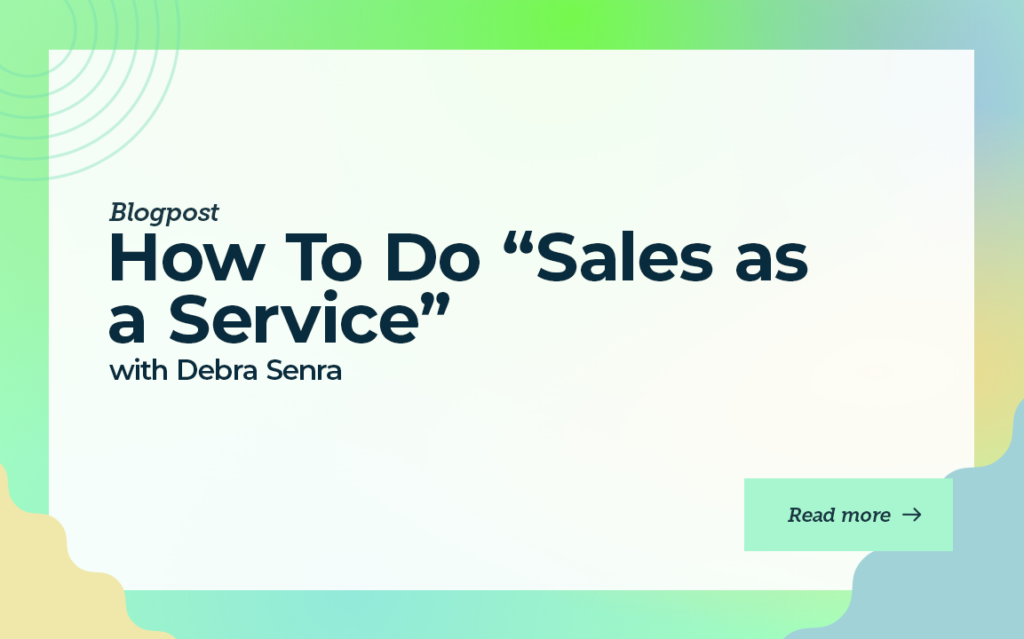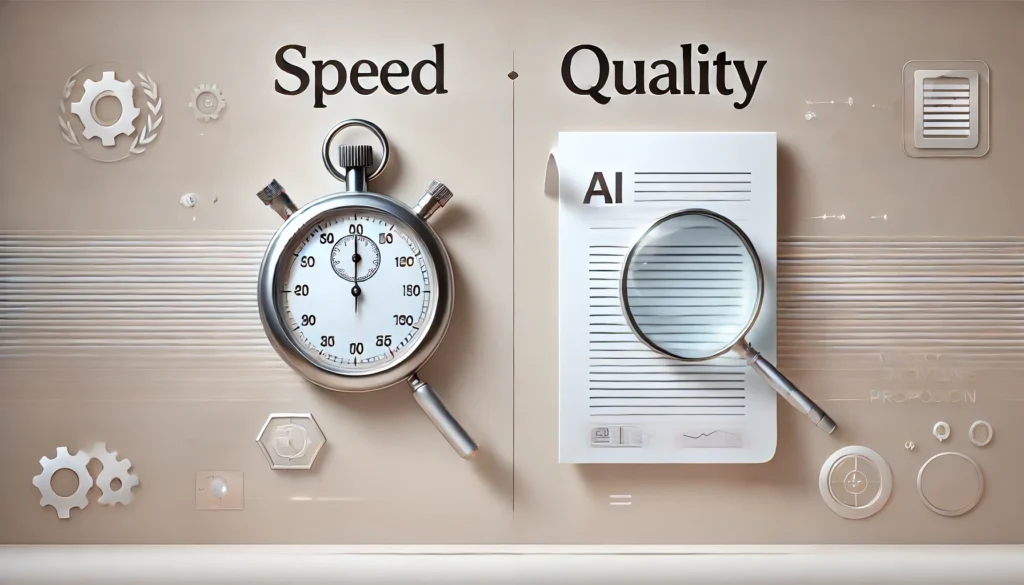How To Do “Sales as a Service” with Debra Senra

On this episode of the Predictable Revenue Podcast, we’re joined by Debra Senra, a two-time guest and seasoned sales leader, to discuss the changing landscape of sales proposals in 2024.
With a rich sales background and a new venture into entrepreneurship, Debra shares her journey from sales leadership to founding her own company, Hyphenate. More importantly, she explores how proposals adapt to current market demands and what sales leaders must consider moving forward.
Why Proposals Still Matter in 2024
The sales world has always been fast-paced, but the importance of delivering strong proposals hasn’t waned. According to Debra, proposals require both art and skill, yet the process often bogs down salespeople with repetitive tasks, especially as technology advances.
In 2024, we will find a balance between automation and maintaining the human touch in proposals.
Introducing AI in sales is exciting but shouldn’t replace human intuition. Debra advocates for a “cyborg approach,” where AI enhances the efficiency of repetitive tasks like drafting proposals, but humans still handle the strategic, creative elements that truly win deals.
AI’s role here is not to take over but to assist sales teams in focusing on higher-value tasks that require nuanced judgment.
The Role of AI in Content Creation
While AI tools like ChatGPT have made their mark in the sales space, there’s a growing recognition that they are not always the perfect solution for creative tasks. As Collin noted during the discussion, using AI to generate content for his book led to more frustration than progress.
He spent more time rewriting AI-generated drafts than he would have spent starting from scratch.
This reflects a common challenge: AI, while efficient, cannot often produce content that aligns with the user’s unique voice and creativity. A recent market study showed that nearly half of proposal writers hesitate to use AI because it doesn’t sound like them.
Efficiency, Not Replacement
The key takeaway? AI can excel in data processing and analysis, but it’s still best to keep humans in the driver’s seat when creating content that requires personal tone and strategic insight. Rather than replacing creativity, AI can serve as a collaborative partner, enhancing efficiency and helping identify patterns or themes across large volumes of data.
For sales teams, the future lies in a balanced approach. AI will handle repetitive, time-consuming tasks while keeping the human touch where it matters most: crafting proposals, messaging, and strategies that resonate with the customer.
Speed vs. Quality
In today’s competitive sales environment, buyers expect rapid responses at every step regarding proposals and across all communication. The era of multiple follow-up calls before revealing pricing is over. Transparency and timeliness are essential.
However, while speed is critical, the demand for high-quality, personalized proposals remains strong. Sellers face the challenge of delivering tailored solutions quickly while ensuring each proposal reflects the customer’s needs. Speed and perfection must coexist in a landscape where clients take longer to make decisions but expect immediate information.
Finding the Balance in Proposals
To meet these expectations, sales teams must rethink their proposal processes. Tools and templates can accelerate workflows, but personalization is critical. Proposals should be more than just numbers; they should speak to the customer’s unique pain points and goals.
AI can assist by analyzing data and summarizing customer insights, helping sellers respond more efficiently without sacrificing quality. However, remaining actively engaged is essential to ensuring the solutions provided are accurate and relevant to the client’s needs.
The Key to Proposals
A strong proposal is built on deeply understanding the customer’s underlying need. Without this foundation, even the most polished proposal will miss the mark. Overcomplicating the discovery process is a common mistake.
The most impactful insights often come from asking simple yet powerful questions, like “Why is that important?” This approach can lead to richer conversations and a more accurate understanding of the client’s challenges.
Once the underlying need is clear, the next step is to communicate it back to the client in a way that makes them feel heard. Trust is built when the client believes you understand their goals and can help them achieve them. It’s not enough to present a solution. You must clearly show the path forward, making it easy for the client to follow and believe in.
Simplicity and Understanding the Underlying Need
In many cases, sellers rush to include bios, product descriptions, or service details in their proposals before clearly outlining how these elements directly solve the customer’s problem. This can come across as filler, diluting the message and causing the client to skip over important details.
Every section of the proposal should relate to the customer’s need, and credibility builders, like team bios, should enhance the story rather than distract from it.
Ultimately, a well-crafted proposal is clear, concise, and customer-focused. It’s about solving the client’s problem in the most straightforward way possible, without unnecessary jargon or filler. Simplicity and a deep understanding of the customer’s needs win deals.
The Power of Intentionality in Proposals
Many companies focus heavily on the visual presentation of their proposals, choosing between PowerPoint and Word, updating templates, and ensuring polished images.
However, the document’s intentional structure and narrative arc are the key to success. It’s not just about what your proposal looks like; it’s about how well it tells the story of your business and addresses the client’s needs.
A strong proposal does three things: it identifies the customer’s underlying need, shows a clear path forward, and builds credibility. These three “legs of the stool” provide a solid foundation for success.
Proposals must be presented in a way that holds attention and is easy to understand, even for those outside the business world. Overly complex proposals risk losing the reader’s attention, while clear, concise proposals create trust and engagement.
Sales as a Service
Speed can distinguish between winning and losing a deal in a crowded market. Responding quickly and framing the conversation on your terms can set a powerful first impression. But speed alone isn’t enough. Quality must be behind it.
The value lies in being the first to present a thoughtful, well-structured proposal that the customer can trust.
Sales is ultimately a service. Companies that understand this and prioritize helping their clients rather than just selling to them will always have the upper hand. It’s about creating proposals that serve as clear, concise solutions to the client’s problems, reinforcing trust and establishing credibility.
Conclusion
To succeed in 2024, sales teams must focus on delivering fast, high-quality proposals. Understanding the customer’s core needs, presenting a clear solution, and building trust through thoughtful communication is essential. AI can enhance efficiency, but the human touch brings personalization and creativity, making proposals stand out.
In a competitive market, the companies that win can balance speed with precision, crafting proposals that resonate with the client and drive results. Success lies in straightforward, intentional storytelling and a relentless focus on solving the customer’s problem.
Discover how Hyphenate’s AI-powered tools can help you create faster, smarter proposals. Get your free narrative arc assessment at hyphenate.ai
Are you looking to scale your outbound sales? Predictable Revenue offers proven systems for building reliable, scalable revenue growth. Learn how we can help.
NO TIME TO READ?
Listen On:



